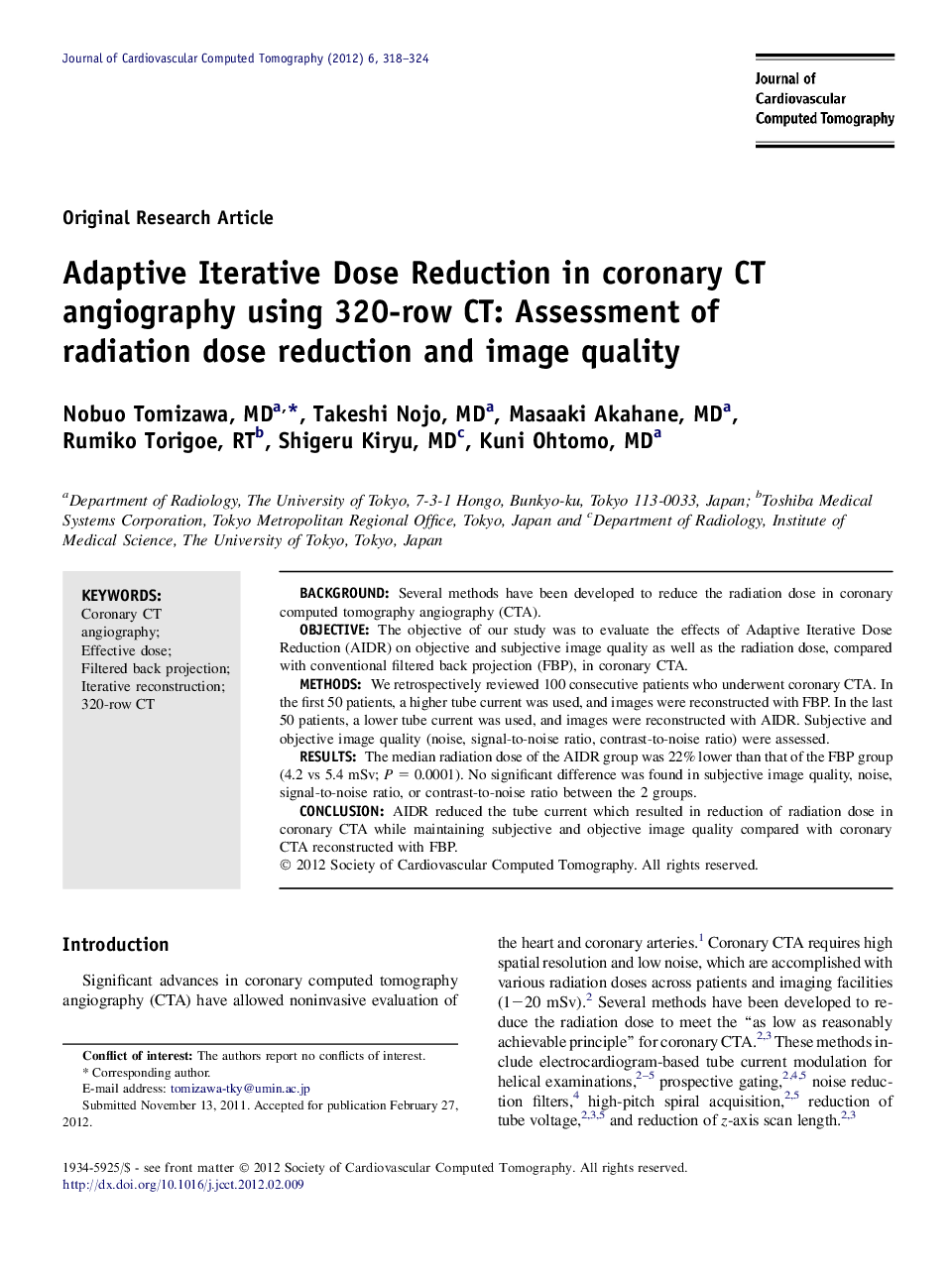| Article ID | Journal | Published Year | Pages | File Type |
|---|---|---|---|---|
| 2964641 | Journal of Cardiovascular Computed Tomography | 2012 | 7 Pages |
BackgroundSeveral methods have been developed to reduce the radiation dose in coronary computed tomography angiography (CTA).ObjectiveThe objective of our study was to evaluate the effects of Adaptive Iterative Dose Reduction (AIDR) on objective and subjective image quality as well as the radiation dose, compared with conventional filtered back projection (FBP), in coronary CTA.MethodsWe retrospectively reviewed 100 consecutive patients who underwent coronary CTA. In the first 50 patients, a higher tube current was used, and images were reconstructed with FBP. In the last 50 patients, a lower tube current was used, and images were reconstructed with AIDR. Subjective and objective image quality (noise, signal-to-noise ratio, contrast-to-noise ratio) were assessed.ResultsThe median radiation dose of the AIDR group was 22% lower than that of the FBP group (4.2 vs 5.4 mSv; P = 0.0001). No significant difference was found in subjective image quality, noise, signal-to-noise ratio, or contrast-to-noise ratio between the 2 groups.ConclusionAIDR reduced the tube current which resulted in reduction of radiation dose in coronary CTA while maintaining subjective and objective image quality compared with coronary CTA reconstructed with FBP.
